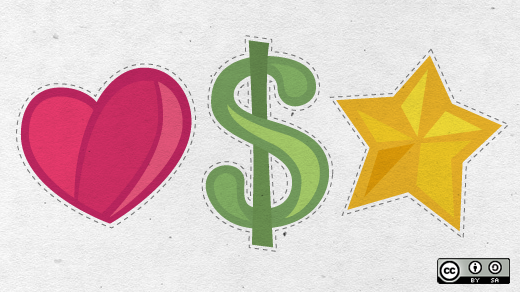Nearly a decade ago, two friends set out to create a full project management platform for open source software called Bountysource. The year was 2004 and the friends were Warren Konkel and David Rappo, and their vision included creating code repositories, file hosting, issue tracking, and bounty support.
The pair spent a few months building out the basic features, but then other projects and jobs got in the way. Konkel went on to become the first hire at LivingSocial and Rappo was working as a producer on video games like Guitar Hero, Transformers, and Skylanders. 
The friends reconnected late last year and the timing seemed right to revisit the Bountysource concept. Konkel and Rappo looked at what they previously built to see what was still relevant and decided to start with a clean slate, relaunching Bountysource in 2013 as a funding platform for open source software. Instead of building their own project management platform, Bountysource now integrates with services developers already use such as GitHub and Bugzilla while focusing on crowdfunding.
Since launching earlier this year, about $20,000 in bounties have been posted on the site, with 10-20% of those having been collected, Konkel said. Many other fundraisers have also launched on the site, with nearly a dozen going on to exceed their initial goals. The largest fundraiser in the site’s short history was JS-Git, which raised $34,596 thanks in large part to generous contributions from Mozilla and Adobe.
The site uses a "flexible funding" model, which means developers collect all funds raised regardless of their funding goals. The site also allows users to fund bounties on open issues or feature requests for their projects, enticing developers to create solutions and claim their bounty.
In this interview, Bountysource co-founder and CEO Warren Konkel talks about the site’s new focus, what he plans to do with the $1.1 million investment the site recently scored, and offers advice for developers considering crowdfunding their next project.

Talk about why you wanted to provide a fundraising outlet for developers when open source projects are already seeing success on sites like Kickstarter and Indiegogo.
While it's true that there have been many successful open source fundraisers on Kickstarter and Indiegogo, we don't see them as direct competitors. Those platforms work great as a pre-sales model for physical consumer goods and technologies, but we believe open source software needs a better funding model that’s more aligned with how software is built. We see a fundraiser as just one small step in the lifetime of an open source project and instead are focusing on creating long-term relationships between developers and backers. When somebody backs a fundraiser, chances are they’ll back a subsequent fundraiser or create a bounty.
What is the ultimate goal of Bountysource? What would you like the company to become known for in the coming years?
We want Bountysource to be the platform where open source developers can earn a living and where anybody can spend money to accelerate development in the open source projects they use. Given that open source software is already heavily crowd-sourced, we believe that crowdfunding is a natural extension.
As we grow, we want to provide developers worldwide with all of the tools they need to continue improving open source software. These tools could be anything from co-working space and laptops to education and training. On the enterprise side, in addition to existing employees and contractors, we want Bountysource to be seen as a permanent resource that helps companies more effectively spend money on open source. Chances are that if one company needs a feature, other companies do as well and crowdfunding economics can come into play.
You recently received a $1.1 million investment (congrats!). Can you talk a little bit about how you snagged the funding and what you plan to use it for?
Thanks! I've been a software developer for most of my career so transitioning into the CEO role has been a fun ride. It became clear early on that Bountysource has a lot of potential but would require a great team to execute on the entire vision. Once we decided that we wanted outside investors, the rest was just problem solving. We needed a pitch deck and a clear vision, so we iterated again and again until we were happy with it. Then we needed to talk to as many investors as possible so we could find the right fit. Then we needed to work through all of the legal and financial documents line-by-line. The entire process ended up taking a few months. We plan on using these funds to grow the team and increase our marketing efforts.
Have you encountered any hesitation from developers or companies about posting or responding to a bounty because of stigma sometimes associated with asking for money?
Yes we have, and we think that this is a reasonable hesitation. However, money has already been a part of open source for decades. Many open source contributors are paid by their employers to work on open source. Many projects already have donation buttons. Many open source developers have consulting businesses around their projects. Ultimately, the motivations behind open source contributions already vary widely. The easiest way to make sense of it all is to focus on the code itself. At the end of the day, if high-quality code is being contributed to a project, the incentives behind the code should be irrelevant.
Is there a pattern you're seeing in the types of issues bounties are being put on? For example, are you seeing that there tend to be more bounties posted for bug fixes versus feature requests?
Generally speaking, there are more bounties on bugs than on feature requests. This seems to be normal behavior as developers will often encounter a bug and want an immediate resolution. That said, bounties on feature requests are definitely growing as people become more familiar with the platform. Often times, bounties lead to a flurry of comments that end up fleshing out the details behind a feature request. With bounties, developers can quickly understand what a community is most interested in seeing improved.
What advice would you give developers who are thinking about launching fundraisers for their projects?
Fundraisers require a lot of planning and community support; get started as soon as you can! Ask a non-technical friend to give you feedback. Gather feedback from your community regarding every detail about your fundraiser before you publish it. Does the fundraiser text explain exactly what you will deliver? Do you clearly state the project’s needs? Did you plan out the rewards? Do you have a plan to spread the word about your fundraiser? These are all questions that should be answered before you "go live" with the fundraiser. Also, don't hesitate to reach out to the Bountysource team as we're happy to help you through the process from start to finish.
Anything else I didn't ask you about that you'd like to add or point out?
Within the next month we'll be rolling out a "Bounty Budget" program that will allow organizations to set a budget and give their entire engineering team easy access to posting bounties. Nearly all developers use open source projects as part of their daily workflow, and Bountysource offers a productive way for companies to put money toward bugs or feature requests, while keeping their developers focused on internal priorities instead.
We’re already testing out the concept with Gust, a global platform for managing early-stage investments. They give their engineers a monthly budget to create bounties on the open source projects they utilize at work. Our hope is that organizations will start to see the value in this and support projects on an ongoing basis.






5 Comments